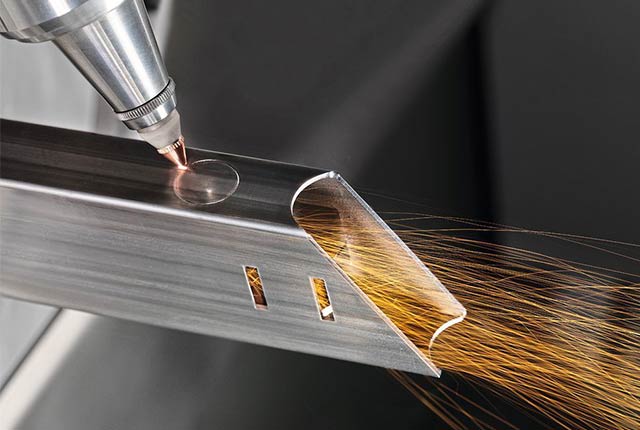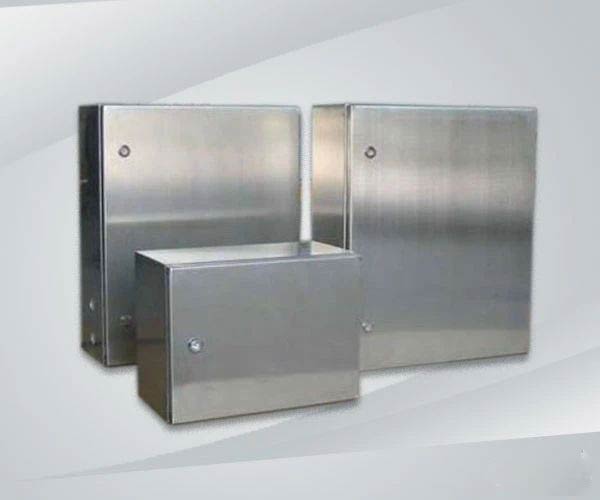WMT CNC Industrial Co., Ltd | All Rights Reserved.Design & Developed by VW Themes

Sheet metal processing is the cutting or cold and hot forming of metal plates, profiles, and pipes without changing their cross-sectional characteristics, and then assembly by welding, riveting and bolting, and finally manufacturing the required The processing methods of metal components mainly involve various professional work types such as fitter, blanking, stamping, metal cutting, welding, heat treatment, surface treatment, riveting, assembly, etc.

Since sheet metal processing is mostly performed on cold or hot separation and forming of raw materials without changing the cross-sectional characteristics of metal sheets, profiles, and pipes, the processed metal is plastically deformed below the recrystallization temperature. Therefore, no chips are produced.
Sheet metal processing can be used to make products of various shapes, sizes, and properties, and the manufactured steel structure products have high strength and rigidity and can make full use of their load-bearing capacity.
In the sheet metal structure manufacturing process, the various parts that make up the structure can be assembled into components by welding, riveting, snapping, or expansion according to a certain position, size relationship, and accuracy requirements. Therefore, the design flexibility is large.
Based on the above analysis, sheet metal processing mainly has the following characteristics.
①Compared with the production and processing of forging and castings, sheet metal components have the advantages of a lightweight, saving metal materials, simple processing technology, reducing production costs, and saving production costs.
②Most of the welded sheet metal components have low processing accuracy and large welding deformation, so the post-weld deformation and correction amount are large.
③Since the welded parts are non-detachable and difficult to repair, reasonable assembly methods and assembly procedures must be adopted to reduce or avoid waste. Large or extra-large products often need to be assembled on-site, so trial assembly should be carried out first. It is advisable to temporarily replace the non-detachable connection with a detachable connection during trial installation.
④In the assembly process, it is often necessary to select, adjust, and repeatedly measure and inspect to ensure product quality.
Because sheet metal processing has a series of advantages such as high production efficiency, stable quality, low cost, and the ability to process complex-shaped workpieces, it is used in machinery, automobiles, aircraft, light industry, national defense, electrical appliances, household appliances, and daily necessities. The application is very extensive and occupies a very important position. According to statistics: sheet metal parts account for 60%~70% of the entire automobile manufacturing parts; aircraft sheet metal parts account for more than 40% of the total number of parts of the whole machine; sheet metal parts in electromechanical and instrumentation, instrumentation account for 60%~70% of the total number of parts produced %; The sheet metal parts of electronic products account for more than 85% of the total number of parts; the sheet metal parts of daily necessities on the market account for more than 90% of all metal products.
With the development of science and technology and the progress of processing technology, a large number of sheetmetal computer-aided design (CAD), computer-aided manufacturing (CAM), computer-aided process design (CAE) and other new technologies and a large number of CNC blanking, forming, welding, etc. New equipment (such as laser cutting, plasma cutting, water cutting, CNC rotary head press, and CNC bending, welding manipulator, welding robot, etc.) are widely used in various industries. At present, sheet metal processing technology is striving to develop in the direction of high speed, automation, precision, safety, etc., various high-speed presses, flexible stamping manufacturing systems (FMS) with functions such as automatic processing, automatic handling and storage, and various numerical control Sheet metal processing presses have been developed and developed one after another. It is foreseeable that the level of sheetmetal processing technology will be further improved, the application fields of sheetmetal components will become wider and wider, and the number of applications will increase.